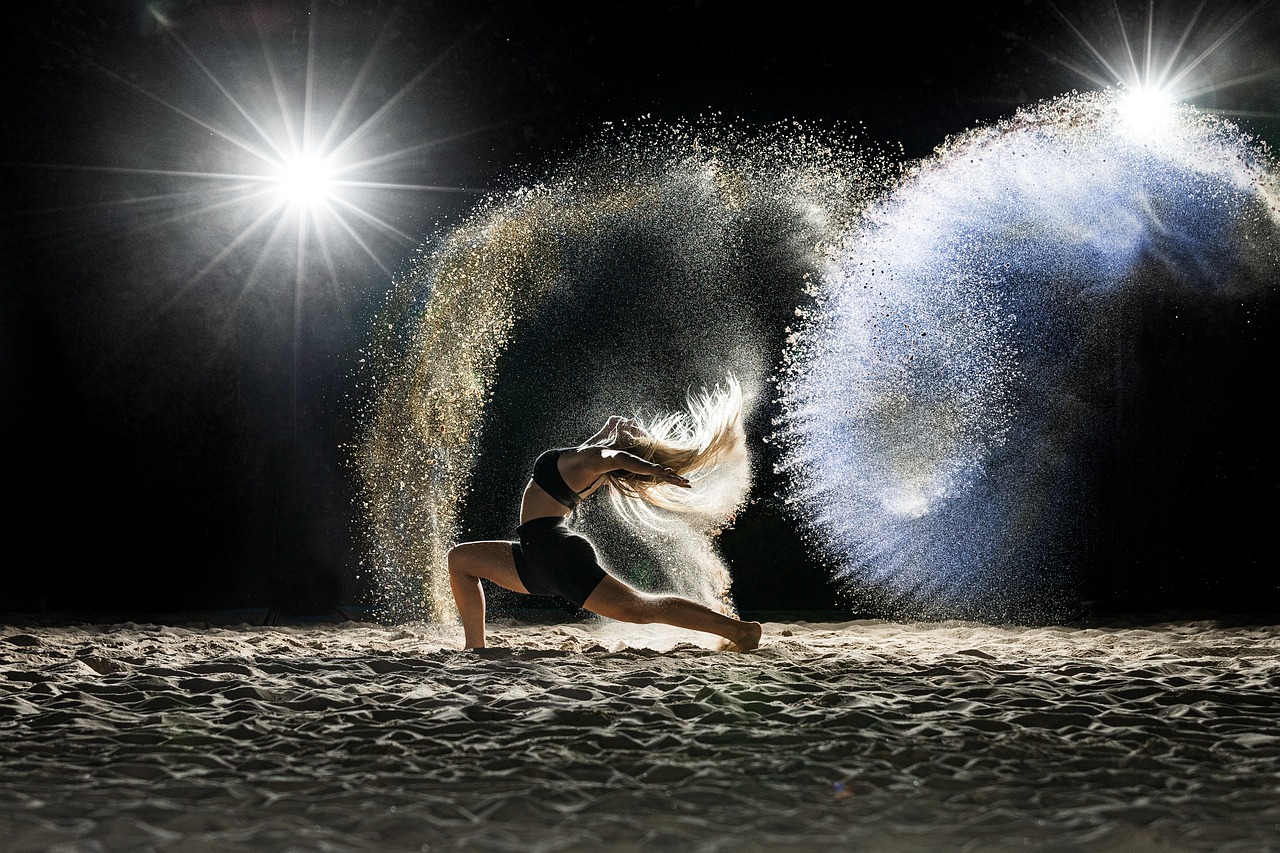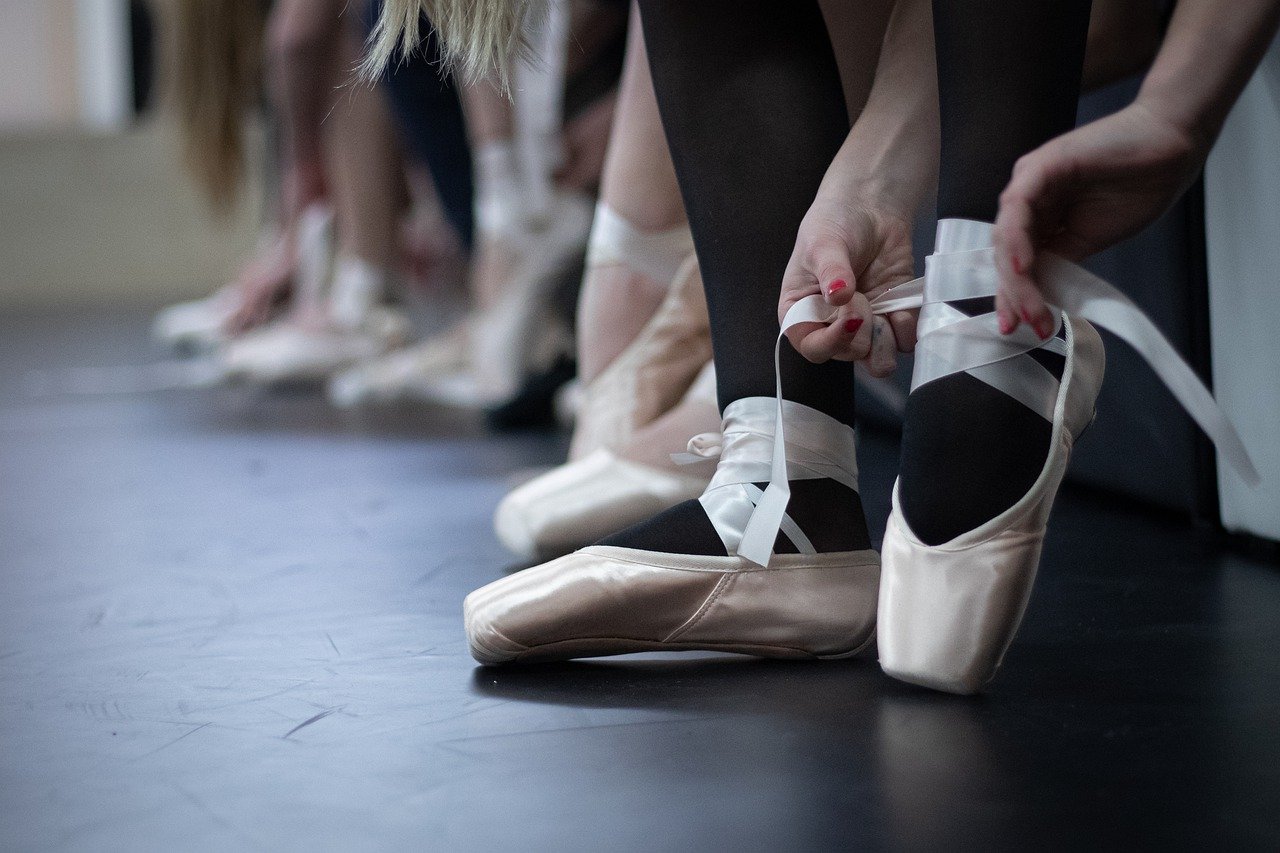Incorporating Dance Moves into Your Self-Defense Training Routine
Have you ever thought about how dance and self-defense might go hand in hand? It might sound surprising at first, but the truth is that integrating dance moves into your self-defense training can be a game-changer. Imagine the fluidity of a dancer combined with the assertiveness of a self-defense practitioner. This innovative blend not only enhances your physical abilities but also boosts your confidence and mental agility in potentially threatening situations. In this article, we will explore how rhythmic movements can significantly improve your self-defense skills, making you not just a fighter but a graceful one at that!
Why should you consider adding dance to your self-defense arsenal? The benefits are numerous! First and foremost, dance improves body awareness. When you are aware of your body's movements, you can react more quickly and effectively to any situation. Additionally, dance enhances flexibility and rhythm, both of which are crucial in self-defense. You see, when you train your body to move rhythmically, you also train it to respond faster. Think of it this way: a dancer who can pivot and leap gracefully can also dodge and maneuver away from an attack with similar finesse. This improved agility can be a significant advantage in real-life scenarios.
There are various dance styles that can be adapted for self-defense, each offering unique movements that can be effective in evading or countering attacks. Here are a few styles to consider:
- Hip-Hop: Known for its energetic and quick footwork, hip-hop is fantastic for enhancing agility.
- Salsa: This dance form emphasizes quick turns and footwork, which can be invaluable for dodging and countering.
- Ballet: Ballet instills strength, poise, and balance—key elements for maintaining control in self-defense situations.
Each of these dance styles contributes to a unique set of skills that can be seamlessly integrated into your self-defense training.
Hip-hop dance is particularly beneficial for developing agility. The emphasis on quick footwork and body control makes it an excellent foundation for agile movements in self-defense scenarios. Imagine being able to sidestep an attacker with the same finesse as you would executing a dance move. This ability to evade threats effectively can be a lifesaver.
Incorporating footwork drills from hip-hop into your training can significantly enhance your speed and precision. These drills focus on quick lateral movements and sudden changes in direction, which are crucial for dodging attacks and positioning yourself advantageously during confrontations. Picture yourself gliding away from an attack, just like a dancer on stage, and you’ll see how beneficial this can be.
Body isolation techniques in hip-hop improve your coordination and control. By learning to isolate different parts of your body, you can execute swift defensive maneuvers while maintaining balance and stability. This ability to control your movements can make all the difference in a high-pressure situation, allowing you to react swiftly and effectively.
Ballet training is not just for aspiring prima ballerinas; it instills poise and balance, essential for maintaining composure in self-defense situations. The strength and flexibility gained from ballet can contribute to powerful defensive movements. Imagine the grace of a ballet dancer combined with the assertiveness of a self-defense expert—this is the kind of presence you can cultivate.
Combining dance movements with self-defense techniques creates a dynamic training method that fosters creativity and adaptability. This approach allows practitioners to respond effectively under pressure, making them more versatile in their self-defense strategies.
Developing drills that blend dance steps with self-defense techniques encourages fluidity in movement. This not only improves reaction times but also enhances your ability to adapt to unexpected situations. Think of it as a dance-off where you have to improvise your moves based on your opponent's actions—this kind of practice can prepare you for real-world confrontations.
Improvisation is a key aspect of both dance and self-defense. Practicing improvisational techniques helps individuals think on their feet, making quick decisions during confrontations. Just like a dancer who must adapt to the rhythm of the music, you’ll learn to adjust your responses based on the dynamics of the situation at hand.
Creating a structured training routine that incorporates dance elements alongside traditional self-defense practices can enhance overall skill development. Not only does this keep your training engaging and enjoyable, but it also ensures that you are well-rounded in your abilities. After all, the best self-defense practitioners are those who can blend various skills seamlessly. So why not dance your way to safety?
Q: Can anyone incorporate dance into their self-defense training?
A: Absolutely! Dance is for everyone, and integrating it into self-defense can benefit individuals of all skill levels.
Q: Do I need to be a skilled dancer to benefit from this approach?
A: Not at all! Basic dance movements can be learned quickly and can still enhance your self-defense capabilities.
Q: How often should I practice these combined techniques?
A: Consistency is key. Aim for a few times a week to see significant improvements in your skills.

The Benefits of Dance in Self-Defense
Integrating dance into self-defense training is not just a novel idea; it’s a game-changer. Imagine the fluidity of a dancer’s movements combined with the tactical awareness of a self-defense practitioner. This unique blend offers a plethora of benefits that can significantly enhance your personal safety skills. First and foremost, dance promotes body awareness. When you engage in dance, you learn to understand your body’s capabilities and limitations, which is essential in self-defense situations. You become more in tune with your movements, making you quicker and more responsive when faced with a threat.
Moreover, dance enhances flexibility and coordination. These attributes are crucial when you need to dodge an attack or execute a defensive maneuver. For instance, a well-timed twist or a sudden pivot can mean the difference between evading an attack and being caught off guard. Dance also introduces rhythm into your movements. This rhythmic quality can improve your reaction times, as your body becomes accustomed to moving fluidly and efficiently. Think of it this way: just as a dancer anticipates the beat, a self-defense practitioner can learn to anticipate an opponent’s moves.
Another significant advantage is the boost in confidence that comes from mastering both dance and self-defense techniques. When you feel good about your movements, whether on the dance floor or in a self-defense scenario, you exude confidence. This self-assuredness can deter potential threats, as aggressors often look for easy targets. Plus, the mental aspect of dance—creativity and improvisation—can enhance your ability to think on your feet during confrontations. You’ll find yourself better equipped to adapt your responses based on the situation at hand.
To summarize, the benefits of incorporating dance into self-defense training include:
- Enhanced body awareness for better movement control
- Improved flexibility and coordination for agile responses
- Increased rhythm to boost reaction times
- Greater confidence that can deter threats
- Creative thinking for quick decision-making
In essence, merging the art of dance with the practicality of self-defense creates a holistic approach that prepares individuals not just physically but mentally for real-life situations. So, whether you're a seasoned dancer or a self-defense novice, consider embracing this innovative training method. The benefits are not just about learning to protect yourself; they’re about becoming a more agile, confident, and aware individual.

When we think about self-defense, the first thing that comes to mind might not be dance. However, the truth is that various dance styles can significantly enhance your self-defense skills. Each dance form brings its own unique flair and set of movements that can be adapted for defensive purposes. Imagine the way a dancer moves—fluid, agile, and often graceful. Now, picture harnessing that energy and applying it to real-life situations where you need to protect yourself. This blend is not just about looking good; it's about being effective!
Let's dive into some dance styles that can be particularly beneficial for self-defense training:
- Hip-Hop: Known for its energetic and fast-paced nature, hip-hop dance emphasizes quick footwork and body control. Practicing hip-hop can help you develop the agility required to evade potential threats and maneuver swiftly during confrontations.
- Salsa: The rhythm and footwork of salsa can enhance your ability to pivot and change direction rapidly. This style encourages a playful yet assertive attitude, which can be empowering in self-defense scenarios.
- Ballet: Ballet is all about precision and control. The poise and balance gained from ballet training can be invaluable when you need to stay calm and composed in a stressful situation. Moreover, the strength and flexibility developed through ballet can contribute to powerful defensive movements.
Each of these styles offers something unique. For example, hip-hop's emphasis on footwork can translate into quick dodging moves, while ballet's focus on balance can help you maintain your center of gravity during an altercation. Salsa, with its rhythmic movements, can teach you how to move fluidly, making it harder for an attacker to predict your next move. The key is to find a style that resonates with you and complements your physical abilities.
Moreover, integrating these dance styles into your self-defense practice can keep your training fresh and engaging. You might find that what starts as a fun way to get fit and express yourself turns into a powerful tool for personal safety. So, whether you're busting a move on the dance floor or using those same moves to protect yourself, the possibilities are endless!
In summary, the world of dance is rich with opportunities to enhance your self-defense skills. By incorporating styles like hip-hop, salsa, and ballet into your training, you can develop a unique skill set that not only prepares you for potential threats but also boosts your confidence and physical fitness. So, why not take a dance class? You might just dance your way to a safer life!
Q: Can dance really improve my self-defense skills?
A: Absolutely! Dance enhances agility, coordination, and body awareness, all of which are crucial in self-defense situations.
Q: What if I have no dance experience?
A: No worries! Many self-defense classes that incorporate dance are designed for all skill levels. Just be open to learning and having fun!
Q: How often should I practice these dance styles for self-defense?
A: Consistency is key. Aim for at least 2-3 sessions a week, mixing dance with traditional self-defense techniques for the best results.

When it comes to self-defense, agility is an absolute game-changer. Imagine being able to dodge an incoming threat with the same finesse as you would bust a move on the dance floor. Hip-hop dance is all about quick footwork and sharp body control, making it an ideal foundation for developing the kind of agility that can keep you one step ahead in a confrontation. With its energetic beats and dynamic movements, hip-hop not only gets your heart pumping but also trains your body to react swiftly and efficiently.
One of the most exciting aspects of hip-hop is the variety of moves you can incorporate into your self-defense routine. For instance, the popular “moonwalk” can be adapted to help you glide backwards away from a potential attacker, creating distance while maintaining your composure. Similarly, the “shuffle” can be transformed into a quick lateral movement that allows you to evade strikes while positioning yourself advantageously. These dance moves aren't just for show; they can be practical tools for evasion and defense.
To truly harness the power of hip-hop for agility in self-defense, consider integrating specific drills into your training. Here are a couple of key elements to focus on:
- Footwork Drills: Practicing footwork drills from hip-hop can significantly enhance your speed and precision. Think of it as a dance-off with yourself, where the goal is to dodge, weave, and pivot with lightning speed. The faster you can move your feet, the quicker you'll be able to react to any situation.
- Body Isolation Techniques: Hip-hop emphasizes body isolation, which means moving one part of your body independently from another. This skill is crucial in self-defense, as it allows you to execute defensive maneuvers while maintaining your balance and stability. For example, you can practice isolating your upper body while performing footwork, ensuring that you're ready to throw a punch or block an attack at any moment.
By focusing on these hip-hop elements, you’ll not only improve your dance skills but also enhance your self-defense capabilities. The rhythm and flow of hip-hop can transform your training into a fun and engaging experience, making it easier to stick with your routine. Plus, the more you practice, the more confident you’ll feel in your ability to handle unexpected situations. Just remember, agility in self-defense isn't just about moving fast; it's about moving smart. So, lace up your sneakers, turn up the music, and get ready to dance your way to safety!
Q: Can dance really improve my self-defense skills?
A: Absolutely! Dance enhances your agility, coordination, and body awareness, all of which are crucial for effective self-defense.
Q: What types of dance are best for self-defense training?
A: Hip-hop, salsa, and ballet are excellent choices, each bringing unique movements that can be adapted for self-defense.
Q: How often should I practice these dance moves for self-defense?
A: Consistency is key! Aim for at least two to three sessions per week to see significant improvement.
Q: Do I need to be an experienced dancer to benefit from this training?
A: Not at all! Beginners can start with basic moves and gradually build their skills over time.

When it comes to self-defense, the importance of footwork cannot be overstated. Just like a dancer gliding across the stage, your ability to move swiftly and gracefully can make all the difference in a high-pressure situation. Footwork drills derived from hip-hop dance not only enhance your agility but also improve your overall coordination. Imagine being able to dodge an attack as effortlessly as you would perform a dance move; that’s the power of integrating dance into your training routine.
One effective way to start incorporating footwork drills is through the **basic shuffle**. This move is simple yet powerful, allowing you to shift your weight quickly from one foot to the other. As you practice, focus on the rhythm of your movements, which will help you develop better timing and balance. You might even consider setting a metronome or playing your favorite upbeat song to keep the tempo lively. The key is to maintain a low center of gravity, which not only aids in stability but also prepares you to spring into action when needed.
Another drill worth exploring is the **lateral slide**, which mimics the side-to-side movements often required in self-defense scenarios. Stand with your feet shoulder-width apart and push off with one foot to slide laterally. As you do this, imagine a potential threat approaching from the side, and practice positioning your body to face the direction of the threat while maintaining your balance. This drill enhances your ability to evade attacks and reposition yourself effectively.
To further enrich your training, you might want to incorporate a **forward-backward drill**. This involves stepping forward and backward in a quick, controlled manner. As you step forward, visualize advancing toward a target, and when you step back, think about creating space between you and an attacker. This drill not only builds speed but also reinforces the idea of maintaining distance, which is crucial in self-defense.
Here’s a quick summary of the footwork drills you can incorporate into your routine:
| Drill Name | Description | Benefits |
|---|---|---|
| Basic Shuffle | Shifting weight from foot to foot | Improves agility and balance |
| Lateral Slide | Sliding side to side | Enhances evasion and positioning |
| Forward-Backward Drill | Stepping forward and backward | Builds speed and reinforces distance management |
Incorporating these footwork drills into your self-defense training not only elevates your skills but also adds an element of fun and creativity. As you practice, remember to stay light on your feet and keep your movements fluid. Just like in dance, the more you practice, the more natural it will feel. So, lace up those sneakers, turn up the music, and let your body flow with the rhythm of self-defense!
Q: Can I really improve my self-defense skills through dance?
A: Absolutely! Dance enhances agility, coordination, and rhythm, all of which are crucial in self-defense scenarios.
Q: What if I have no dance experience?
A: No worries! Many footwork drills are simple and can be learned at any skill level. Start slow and build your confidence.
Q: How often should I practice these drills?
A: Consistency is key. Aim for at least 2-3 times a week, and gradually increase the intensity as you improve.

Body isolation techniques, a hallmark of hip-hop dance, play a pivotal role in enhancing coordination and control, which are essential skills in self-defense training. These techniques focus on moving specific parts of the body independently while maintaining stability and balance. Imagine a puppet on strings; each movement is deliberate, showcasing the ability to move one limb without affecting the others. This is not just an art form; it's a practical skill that can be translated into real-world scenarios, especially when you need to react swiftly to an unexpected threat.
Incorporating body isolation into your self-defense routine can significantly improve your overall agility. For instance, when you practice isolating your shoulders while keeping your lower body grounded, you develop the ability to shift your weight quickly and fluidly. This is crucial during a confrontation when you need to dodge an attack or reposition yourself to counter effectively. Moreover, body isolation techniques enhance your awareness of your body in space, allowing for more precise movements that can be crucial in high-pressure situations.
To effectively integrate body isolation techniques into your self-defense training, consider the following key elements:
- Focus on Core Engagement: Engaging your core while isolating movements helps maintain balance and control.
- Practice Slow and Controlled Movements: Start slow to master the technique before increasing speed. This builds muscle memory, making it easier to react quickly when needed.
- Use Mirrors for Feedback: Practicing in front of a mirror allows you to see your movements and make necessary adjustments, enhancing your technique.
By mastering body isolation techniques, you can create a solid foundation for executing swift defensive maneuvers. This not only helps in maintaining balance during an encounter but also allows you to respond with precision. Think about it: just like a dancer who can move seamlessly across the stage, you too can learn to navigate challenging situations with grace and confidence. The more you practice, the more instinctive these movements will become, ultimately empowering you in your self-defense journey.
Q1: Can anyone learn body isolation techniques?
A1: Absolutely! Body isolation techniques can be learned by individuals of all skill levels. With practice and dedication, anyone can improve their coordination and control.
Q2: How often should I practice these techniques?
A2: Consistency is key. Aim to incorporate body isolation drills into your training routine at least 2-3 times a week for optimal results.
Q3: Do I need a dance background to benefit from these techniques?
A3: No prior dance experience is necessary. The techniques can be adapted for beginners, making them accessible to everyone interested in enhancing their self-defense skills.

Ballet is often seen as a graceful art form, but its techniques offer far more than just aesthetics; they provide a solid foundation for poise and balance that is crucial in self-defense situations. When you think about it, ballet dancers are not just performers; they are athletes who train their bodies to respond with precision and elegance. This kind of training can be incredibly beneficial for anyone looking to enhance their self-defense capabilities. By incorporating ballet techniques into your routine, you can develop a sense of control over your body that translates directly into improved defensive movements.
One of the key components of ballet is balance. Dancers spend countless hours perfecting their ability to maintain stability, even while executing complex movements. This skill is invaluable in self-defense, where the ability to stay grounded can determine the outcome of a confrontation. For instance, when a potential threat arises, the ability to shift your weight and pivot quickly can help you evade an attack or reposition yourself for a counter-move. Imagine a ballet dancer executing a flawless pirouette; that same fluidity and balance can be applied to dodging an incoming strike or maintaining a defensive stance.
Additionally, ballet emphasizes core strength, which is essential for any physical activity, especially self-defense. A strong core not only supports your movements but also enhances your ability to generate power when needed. Whether you're delivering a swift kick or executing a defensive maneuver, the strength cultivated through ballet can provide that extra push. Think of your core as the engine of a car; without it, you might be able to move, but you won't have the horsepower to accelerate when it matters most.
Moreover, ballet teaches body awareness. Dancers learn to be acutely aware of their bodies in space, which helps with coordination and reaction time. This heightened awareness can be a game-changer in self-defense scenarios. When you're aware of how your body moves, you're better equipped to anticipate an opponent's actions and respond accordingly. For example, if someone attempts to grab you, your ballet training can help you recognize the movement and react quickly, perhaps by using a well-timed spin or a swift sidestep.
To put these concepts into practice, consider incorporating specific ballet exercises into your self-defense training routine. For instance, pliés can enhance your leg strength and stability, while relevés can improve your balance and agility. These exercises not only build physical capabilities but also instill a sense of confidence that is essential when facing potential threats. As you develop these skills, you'll find that your movements become more fluid and instinctive, allowing you to respond to challenges with grace and effectiveness.
In summary, blending ballet techniques into your self-defense training can significantly enhance your poise and overall effectiveness. By focusing on balance, core strength, body awareness, and specific exercises, you can cultivate a unique skill set that not only prepares you for potential confrontations but also boosts your confidence in everyday situations. So, why not take a leap—quite literally—and explore how ballet can elevate your self-defense game?
- Can anyone incorporate ballet into their self-defense training? Absolutely! Ballet techniques can be adapted for individuals of all skill levels, making it accessible and beneficial for everyone.
- How long does it take to see improvements? With consistent practice, you may notice improvements in balance and coordination within a few weeks.
- Do I need a dance background to benefit from these techniques? No prior dance experience is necessary. The focus is on learning and integrating the techniques into your self-defense routine.

When it comes to self-defense, the traditional methods often focus on brute strength and tactical maneuvers. But what if you could add a twist—literally and figuratively? Merging dance with self-defense techniques creates a training experience that is not only effective but also incredibly engaging. Imagine the grace of a dancer combined with the instinctive reactions of a self-defense expert; this fusion can significantly enhance your ability to respond to threats. It’s like adding a splash of color to a black-and-white painting, transforming the mundane into something vibrant and dynamic.
One of the most exciting aspects of this integration is the creativity it fosters. Traditional self-defense can sometimes feel rigid or rehearsed, but by incorporating dance movements, practitioners can learn to flow seamlessly between techniques. This fluidity is crucial in high-pressure situations where quick thinking and adaptability are essential. For instance, a simple pivot from a salsa step can be transformed into a swift dodge, allowing you to evade an attack while maintaining your balance and composure.
Moreover, developing drills that blend dance steps with self-defense techniques can make training sessions feel less like a chore and more like a creative outlet. Picture yourself practicing a series of movements that start with a hip-hop shuffle, followed by a defensive block, and ending with a graceful turn. This kind of training not only improves physical skills but also boosts confidence, as each successful maneuver reinforces your ability to handle unexpected situations. It’s like learning to dance in the rain; instead of fearing the storm, you embrace it and find joy in the movement.
To illustrate the benefits of merging these two disciplines, consider the following table that outlines some effective dance moves and their corresponding self-defense applications:
| Dance Move | Self-Defense Application |
|---|---|
| Hip-Hop Shuffle | Dodging an attack while maintaining a low center of gravity |
| Salsa Spin | Quick repositioning to face an opponent |
| Ballet Plié | Lowering your body for stability during a defensive stance |
| Jazz Hands | Creating space and distraction with open hand gestures |
This table highlights how each dance move can be creatively repurposed for self-defense, showcasing the versatility of movement. The beauty of this approach lies in its ability to turn practice into play, allowing individuals to explore their capabilities in a supportive environment. It’s not just about learning to defend yourself; it’s about embracing the art of movement, which can be empowering in its own right.
Ultimately, merging dance and self-defense techniques is about more than just physical skills; it’s about cultivating a mindset that thrives on creativity and adaptability. As you practice these integrated movements, you’ll find that your confidence grows, not just in your ability to defend yourself, but in your overall physicality. It’s a journey of self-discovery where every step, every turn, and every block becomes part of a larger dance of life.
- Can anyone participate in dance-based self-defense training? Absolutely! This type of training is suitable for individuals of all ages and fitness levels. The focus is on movement and adaptability, making it accessible to everyone.
- Do I need to have dance experience to benefit from this training? No prior dance experience is necessary. The techniques can be adapted to suit your current skill level, allowing you to learn and grow at your own pace.
- How often should I practice these techniques? Regular practice is key to mastering any skill. Aim for at least two to three sessions a week to see significant improvements in your agility and confidence.

When it comes to self-defense, the ability to adapt and respond quickly is crucial. This is where creative combination drills come into play. By merging dance movements with self-defense techniques, you can cultivate a training environment that not only enhances your physical skills but also keeps your mind engaged and alert. Imagine dancing to the rhythm of your own body while simultaneously preparing to defend yourself; it’s a beautiful blend of art and practicality!
These drills encourage fluidity in movement, allowing you to transition seamlessly from one action to another. For instance, you might start with a simple salsa step, which helps you practice your footwork, and then transition into a defensive maneuver like a block or a counter. This not only improves your agility but also enhances your ability to think on your feet. The beauty of these drills lies in their adaptability. You can customize them to suit your skill level and personal preferences.
To get started, consider the following steps for designing your own creative combination drills:
- Choose a Dance Style: Select a dance style that resonates with you. Whether it's hip-hop, salsa, or even contemporary dance, each style offers unique movements that can be integrated into your self-defense training.
- Identify Self-Defense Techniques: Pick a few self-defense techniques that you want to incorporate. These could range from basic blocks and strikes to more advanced grappling moves.
- Combine Movements: Start creating combinations by linking dance steps with self-defense techniques. For example, you could do a spin (from dance) followed by a side kick (from self-defense).
- Practice Regularly: Consistency is key. The more you practice these combinations, the more natural they will feel, allowing you to execute them under pressure.
Incorporating music into these drills can elevate the experience even further. Music not only sets the mood but also helps you maintain rhythm and timing, which are essential in both dance and self-defense. As you practice, focus on your body movements, ensuring that each action flows into the next. This rhythmic approach will not only boost your confidence but also prepare you for real-life scenarios where quick thinking and agility are vital.
To illustrate the effectiveness of creative combination drills, consider a simple example: you begin with a basic hip-hop step, then transition into a defensive block, followed by a swift jab. This sequence not only trains your body but also engages your mind, forcing you to think creatively about how to respond to potential threats. The more you practice, the more instinctual these movements will become, allowing you to react without hesitation.
In conclusion, creative combination drills are not just about physical training; they are a holistic approach to self-defense that emphasizes adaptability and creativity. By merging dance with self-defense, you can develop a unique skill set that prepares you for any situation while keeping your training fun and engaging. So, why not lace up those shoes and start blending the rhythm of dance with the art of self-defense? Your body and mind will thank you!
Q1: Can I practice these drills alone?
Absolutely! Many creative combination drills can be practiced solo. Just find a space where you can move freely and let the rhythm guide you.
Q2: Do I need to have a dance background to start?
Not at all! While a dance background can be helpful, it's not necessary. The key is to be open to learning and having fun.
Q3: How often should I practice these drills?
Aim for at least two to three times a week. Consistency will help improve your skills over time.
Q4: Can I incorporate other forms of exercise into my training?
Definitely! You can mix in strength training, cardio, or flexibility exercises to create a well-rounded fitness routine.

Improvisation is a crucial aspect of both dance and self-defense, offering a unique blend of creativity and quick thinking. When faced with unexpected situations, whether on the dance floor or in a self-defense scenario, the ability to improvise can make all the difference. Think of it as a dance with life itself, where the rhythm can change at any moment, requiring you to adapt and respond fluidly. In self-defense, this means being able to react instinctively to an attack, using the skills you've honed through both dance and martial arts.
Incorporating improvisation into your training routine not only sharpens your reflexes but also boosts your confidence. It encourages you to trust your instincts, allowing you to make split-second decisions that could potentially save you from harm. Just like a dancer who must adjust their movements based on the music's tempo or the audience's energy, a self-defense practitioner must be ready to shift their strategy based on the aggressor's actions.
To cultivate improvisation skills, consider practicing the following exercises:
- Freestyle Movement: Set a timer for a few minutes and move freely, allowing your body to respond to the music or your environment. This can help you break free from rigid patterns and encourage spontaneous movement.
- Partner Drills: Work with a partner to simulate various attack scenarios. As your partner throws punches or attempts grabs, focus on responding with your own movements, mixing in dance-inspired footwork and body shifts.
- Shadow Practice: Visualize an attacker and practice your responses without a partner. Imagine different scenarios and practice how you would evade or counter, integrating dance elements into your movements.
By regularly engaging in these improvisational exercises, you create a mental and physical toolkit that prepares you for real-life confrontations. The beauty of improvisation lies in its unpredictability; it allows you to express yourself while also reinforcing the core principles of self-defense. So next time you're in a self-defense class or at a dance session, remember that the ability to improvise is not just a skill—it's an art form that can empower you in unexpected ways.
Q: How can dance improve my self-defense skills?
A: Dance enhances body awareness, coordination, and rhythm, all of which are crucial for effective self-defense. It helps improve your reaction time and agility, allowing you to respond more effectively in real-life situations.
Q: What types of dance are best for self-defense training?
A: Styles like hip-hop, salsa, and ballet can be particularly beneficial. Each style offers unique movements that can be adapted for evasion and countering attacks.
Q: Do I need to be a dancer to incorporate dance into my self-defense training?
A: No prior dance experience is necessary! The key is to be open to learning and integrating rhythmic movements into your training routine.
Q: Can improvisation really help in a self-defense situation?
A: Absolutely! Improvisation helps you think quickly and adapt to changing circumstances, which is vital during a confrontation.
Q: How often should I practice improvisation skills?
A: Regular practice is essential. Aim to incorporate improvisational exercises into your training sessions at least once a week to build confidence and enhance your reflexes.

Creating a structured training routine that combines dance elements with traditional self-defense techniques is not just beneficial; it's a game-changer! Imagine stepping into your training space, feeling the rhythm of the music, and knowing that every move you make is enhancing your ability to protect yourself. A well-rounded routine can not only boost your skills but also keep you motivated and engaged. So, how do you go about developing this innovative training regimen?
First, consider setting specific goals for your training. Are you looking to improve your agility, strength, or perhaps your reaction time? By defining your objectives, you can tailor your routine to focus on the areas that matter most to you. For instance, if agility is your primary goal, you might want to dedicate more time to hip-hop footwork drills. On the other hand, if you're aiming for strength, incorporating ballet techniques that emphasize core stability and balance will be crucial.
Next, a balance between dance and self-defense is essential. A typical training session could look something like this:
| Time (Minutes) | Activity | Description |
|---|---|---|
| 10 | Warm-Up | Dynamic stretching and light dance movements to prepare the body. |
| 20 | Hip-Hop Footwork Drills | Focus on quick movements and agility to enhance evasion techniques. |
| 20 | Ballet Techniques | Practice balance and strength exercises to improve poise in self-defense. |
| 15 | Combination Drills | Integrate dance moves with self-defense techniques for fluidity in movement. |
| 15 | Cool Down | Stretching and reflection on the session to promote recovery. |
Incorporating a mix of these elements not only keeps your training fresh but also emphasizes the importance of adaptability in both dance and self-defense. Additionally, don’t forget to include a variety of music styles to keep the energy high and to help you find your rhythm. Music can be a powerful motivator, transforming your practice from a mundane task into an exhilarating experience.
Lastly, remember that consistency is key. Aim to train regularly, whether it’s a few times a week or daily, depending on your schedule. Keeping a training journal can also be helpful. Documenting your progress, noting what works and what doesn’t, can provide valuable insights and help you stay accountable. Plus, it’s incredibly rewarding to look back and see how far you’ve come!
In conclusion, developing a training routine that merges dance and self-defense is not only innovative but also incredibly effective. By focusing on your goals, maintaining a balanced approach, and being consistent, you’ll cultivate skills that enhance both your physical capabilities and your confidence. So, lace up those shoes, turn up the music, and get ready to dance your way to safety!
- Can I practice self-defense without prior dance experience?
Absolutely! While dance can enhance your skills, the fundamental self-defense techniques can be learned independently. - How often should I train to see improvements?
Consistency is key! Aim for at least 2-3 sessions a week to see noticeable progress. - What if I don't like dancing?
You can still incorporate movement and rhythm into your training without traditional dance. Consider activities like martial arts or aerobics that emphasize movement.
Frequently Asked Questions
- Can dance really improve my self-defense skills?
Absolutely! Integrating dance into your self-defense training can enhance your agility, coordination, and body awareness. These skills are crucial for reacting quickly and effectively in real-life situations. Think of it as adding a rhythm to your reactions—when you move fluidly, you're more likely to evade or counter an attack.
- What types of dance are best for self-defense training?
Various dance styles can be beneficial, including hip-hop, salsa, and ballet. Each style brings unique movements that can be adapted for self-defense. For instance, hip-hop focuses on quick footwork, while ballet enhances poise and balance. Mixing these styles can create a well-rounded approach to your training.
- How do footwork drills from hip-hop enhance my self-defense?
Footwork drills from hip-hop emphasize speed and precision, which are essential for dodging attacks and positioning yourself effectively. By practicing these drills, you’ll develop quicker reflexes, allowing you to respond to threats more efficiently. It’s like learning to dance your way out of danger!
- Is improvisation important in self-defense?
Yes! Improvisation is a key skill in both dance and self-defense. Practicing improvisational techniques helps you think on your feet, enabling you to make quick decisions during confrontations. Just like in dance, where you have to adapt to the music, in self-defense, you need to adapt to the situation.
- How can I create a training routine that includes dance?
To create a structured training routine, start by selecting a few dance styles that resonate with you. Then, incorporate dance movements alongside traditional self-defense practices. This combination will not only keep your training engaging but also enhance your overall skill development. It’s all about finding your rhythm in both dance and defense!



















